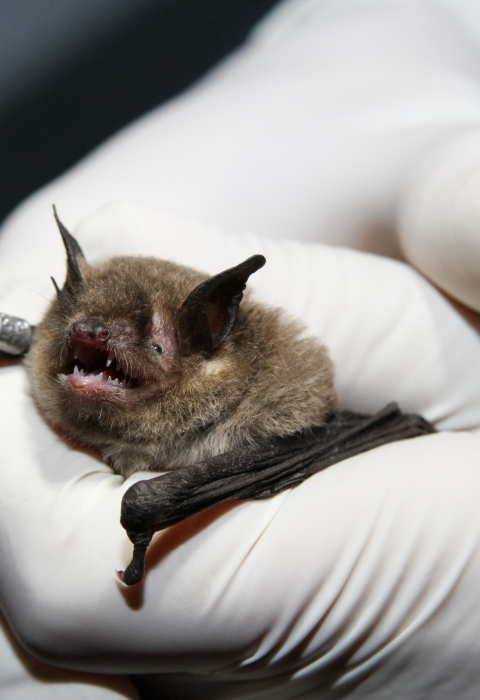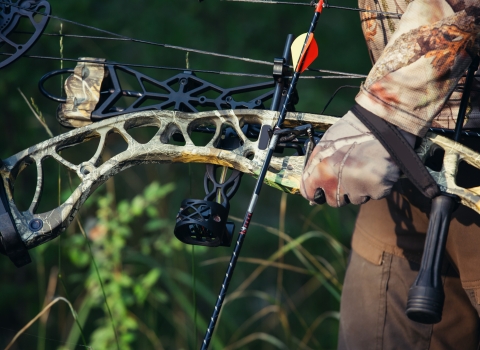In 2006, white-nose syndrome, a fungal disease affecting cave-dwelling bats, was discovered in New York, and has since spread to 33 states and into Canada. It has killed millions of bats and directly contributed to the northern long-eared bat being protected under the Endangered Species Act and with other species currently under consideration for similar protection.
Curiously, as bat populations declined, technology to detect them advanced tremendously. Traditionally, biologists collect information on species presence by setting out fine nets at dusk and waiting for a bat to fly into them. Once a bat becomes entangled in the net, biologists carefully free it, record the species and collect whatever data is needed - sex, white-nose syndrome wing damage, etc. - then release the bat. It’s a lot of labor, requires a decent amount of luck, and results in sleepy biologists coming home in the earliest hours of the morning.
While bats are out at night, they make ultrasonic sounds – to find their food, to find each other, to keep from flying into trees. Just as a chicken makes different sounds than a duck, different species of bats make different sounds and that’s the basis for the transformative development in identifying bats on the landscape. Instead of working a net into the darkest hours of the night, today the technology exists for biologists to go out during normal working hours, set up an audio recorder engineered to pick up bats’ ultrasonic calls, turn it on, and walk away. A few days later, the recorder is retrieved and back at the office, those recordings can be run through computer software providing a preliminary species identification which can be verified by a biologist trained on interpreting the recordings.
Three biologists with the Asheville Field Office have been formally trained in the use of this equipment, and office staff recently had a field day to gain familiarity with the equipment and how it’s used. The biologists set up a pair of detectors at a wetland in Henderson County, NC. After leaving the detectors up for a week, the memory cards were downloaded, processed and eight species were identified – big brown, eastern red, hoary, silver-haired, little brown, tricolored, Mexican free-tailed, and the endangered gray bat.
Versed in the technology, biologists can use it to fill in gaps in our knowledge about the distribution of bats over the landscape, which in-turn feeds decisions about where to focus efforts to conserve bats and where the needs of our most imperiled bat species need to be considered.









